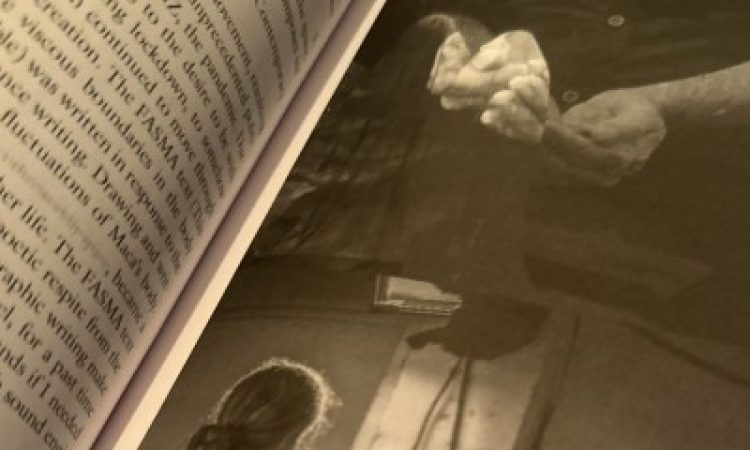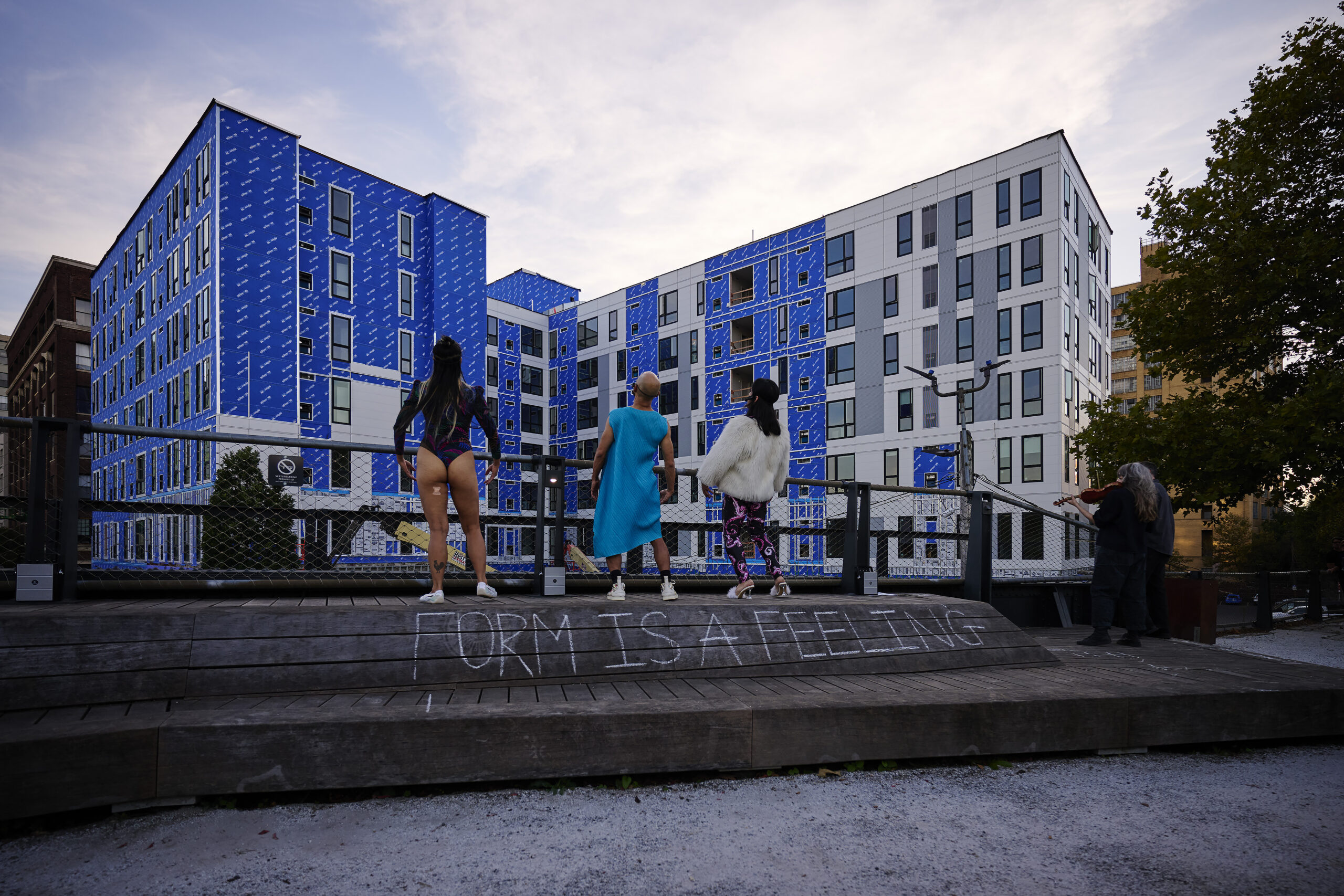I spent the last month diving into, noting in, and daydreaming through Writing Choreography, Textualities of and Beyond the Dance, edited by Leena Rouhiainen, Kirsi Heimonen, Rebecca Hilton, and Chrysa Parkinson. This book uses expanded definitions of dance and writing to discuss forms of writing in performance making and as performative engines. It asks artists and researchers active in the Nordic and Oceanic regions to address artistic research as knowledge production and score generation, as well as the material and immaterial implications of working with writing in the choreographic form.
Writing Choreography is not about using text in dance pieces. It is more about mining for form and meaning by interweaving and exchanging writing and choreographies in the process behind a work. As Emma Cocker, Nikolaus Gansterer, and Mariella Greil write in their essay Choreo-graphic Writing, Towards more-than-one means of inscription, what happens in the research is a kind of “co-emergent sense making” that takes place in the interstices, interactions, and indeterminacies. If that all seems like a lot to swallow, it is, though overall, worth the time. This book contains multitudes of rich resources, from methodologies to visual essays, transcriptions of dances that will become films, research, the logging and languaging of an artist’s time in a residency at sea, and scores and approaches to real-time score making. I feel like this is the kind of book a performance maker will heavily notate and dog ear, keeping nearby as a tool for digging further in the studio. There is a physical activation in most of the essays that makes it feel less geared towards your thinking and more towards your doing, but that’s not to say it isn’t a heady theoretical text.
The editors opened the essays with a collective voice, a transcribed conversation about how they chose to frame the inquiry. They led us into the book by saying, “Ah, transcribed performance becomes writing, practices of writing choreograph, and choreography writes with.” This decoding and encoding of writing in dance took many forms throughout the 13 essays.
There are three parts: Transcribing performance into writing, Practices of writing that choreograph, and Choreography as writing. These sections were very clear and well curated and helped to frame the contributions.
Alys Longley contributed a dynamic “process-oriented fragmentary essay” that is a treasure trove of investigation. It is at once a research essay, a proposition for a particular hybridized methodology, and a poem. In it, she asks, “The agency of materials and chance encounters, within relationships, environments, and ecologies travel ideas far beyond that which artists intend or can control. What if a choreography could be understood as authored in an expanded way, so the writing of choreographic moments to pages could value social and environmental ecologies, relationships, chance conditions, and the practices of care that form the ground of choreographic invention?” This reminds me in some ways of how thINKingDANCE seeks to approach writing about dance. That it can be authored in a way that holds up to the form of the work itself and that seeks to honor it while also reaching into the unknown ground between the work and the viewer; perhaps the space where writing lives?
Another notable contribution is the essay Invitation: Choreoreading EXOXƎ, by Simo Kellokumpu. “The exploration is based on the understanding in which writing and reading are simultaneously operative bodily practices” and filters “the embodied practice in a more specific dialogue with writer James Sisnoski’s (1999) description of the characteristics of hyper-reading.” The essay unpacks and contextualizes these ideas through the writing about a particular piece: EXOXƎ. Talking about reading instead of writing, are we coming from the other side? What are the implications of this change in direction? The piece centers around eye movements, is a written monologue of this reading process, and dissolves into some interesting description of their bodily sensations by the end.
Amaara Raheem wrote a fascinating and conversational account of her time on an artist’s residency aboard a cargo ship in her essay Logging, Expedition and Encounter. She outlines her time spent, her practices aboard the ship, and some of the ship’s officers and activities, and mines the words “residency” and “reside” for information about how to be in that moving place. She goes through the ship’s log and begins one of her own using its categories. Of her practice, she writes, “Dancing for me also involves language. Or rather, languageing: a practice of feeling for knowledge expressed through the strange consolidation of movement-and-words in parallel. In languageing, I am interested in alternative approaches of translation, transmission, or synthesizing in the project of articulating movement.”
Finally, it is worth noting again the essay by Emma Cocker, Nikolaus Gansterer, and Mariella Greil called Choreo-Graphic Writing. It immediately positions itself as the record of an artistic research project that, among other things, looks at “the evolution of experimental language practices as artistic research.” What follows is a rich breakdown of different possibilities within this frame that kept me going back for a reread and considering my performance methods in relation.
The book closed with what the editors called a “Choreographic Aftermath,” acknowledging that while epilogues tend to summarize and bring closure, their intention was instead to create “choreographic possibilities rather than coming to any conclusions.” With that, they followed one of the scores discussed in the previous chapter and left us with co-authored poetics that held this gathering or mapping of practices together as an invitation to step into the studio.
Writing Choreographies, Textualities of and beyond Dance edited by Leena Rouhiainen, Kirsi Heimonen, Rebecca Hilton, and Chrysa Parkinson, Routledge 2024.






